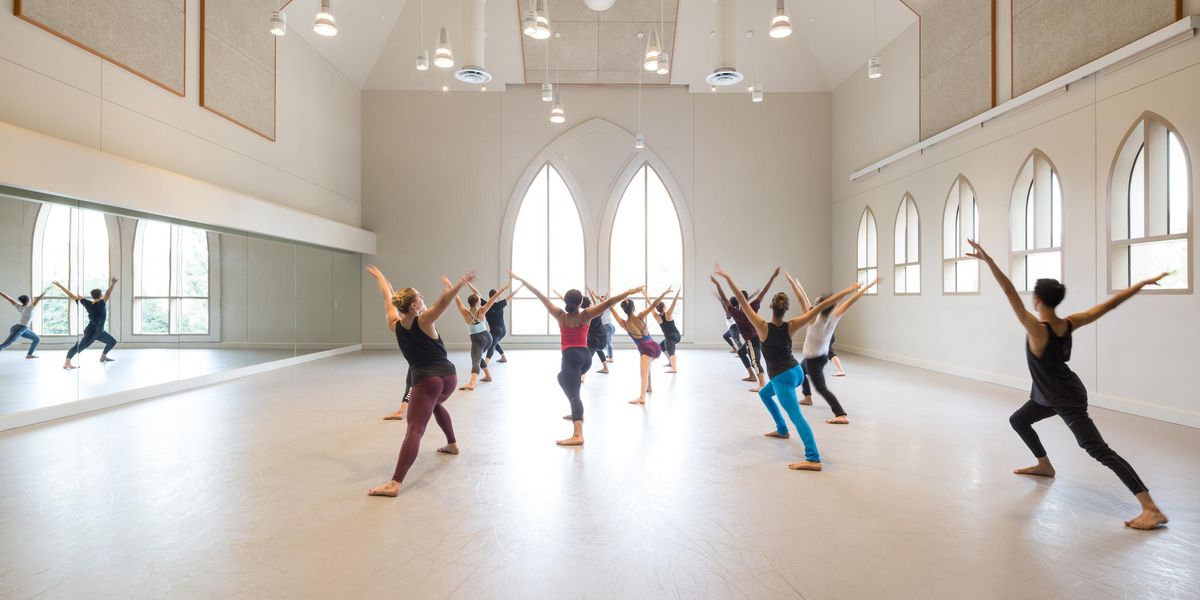Your Body: Balancing Act
Above: Bosu Balance Trainer
Liz Walker has her physical therapist and several balance-building gadgets to thank for getting her through The Nutcracker this past holiday season. A year ago she tore a crucial ligament in her midfoot while rehearsing Swan Lake. After surgery, the Los Angeles Ballet dancer used a Bosu Balance Trainer and rotation discs to get back onstage. “All the muscles in my right leg had atrophied from months of not being able to bear weight,” says Walker. “Balancing exercises enabled me to integrate core strength toning with strength building in my entire body, especially my leg.”
These days, wobbly devices such as a Bosu, rotating discs, spiked half-ball domes, foam squares, and a wobble board are the mainstays of any gym. They have also become go-to devices for dancers recovering from injury. Unstable surfaces are widely used in recovery from ankle, foot, hip, and spine injuries. Trying to balance wakes the body up as all the core muscles kick in. To prevent the dancer from leaning or falling over, the nervous system goes into hyperdrive, often improving the body’s efficiency. Instead of sliding into its usual bad habits, the body instinctively seeks new and more efficient patterns to keep the dancer upright.
Balance devices help dancers cultivate a better sense of their bodies, according to Los Angeles freelance physical therapist Natalie Imrisek. “I use various unstable surfaces to bring awareness to inefficient or compensatory patterns,” says Imrisek, who works with several L.A. Ballet dancers. “It is always beneficial for the person to feel an unhealthy pattern in her body so she can correct it.” Increased joint stability and improved motor control skills are added benefits.
Once a doctor or physical therapist has determined that a dancer’s recovery is far enough along to permit retraining, Imrisek recommends these simple exercises:
•Step up and down on an unstable surface, like a Bosu, with both injured and non-injured leg. Stand with both legs and balance on an unstable surface. Gradually progress to single-leg balances. Work up to holding for 30–60 seconds, with 3–5 repetitions.
•As the injured leg improves, use a rotating disc to reinforce turning out from the hips, then stand in second position doing pliés and relevés. The goal is to be able to control the movement enough so the discs do not move.
•Gradually add pliés, relevés, dévelopées, passés, and arabesques on a Bosu or wobble board; do each set in parallel and turned out.
Nancy Wozny writes about health and the arts from Houston.
What’s Wobbling?
Basic gear for balance building
Bosu Balance Trainer:
This gadget has a curved, bouncy dome and a flat side. Each offers a different kind of unstable surface, allowing the dancer to work up to more challenging situations. It’s versatile and can be used to develop upper-body strength as well. ($85.95, www.bosu.com)
Rotating Discs:
Physical therapists often start leg-injury recovery by having dancers work on a pair of rotating discs. The 11-inch circles rotate, and are used in developing both upper and lower body strength and stability. ($77.95, www.optp.com)
Go Green
Who knew that guacamole was a health food?
New research from Ohio State University suggests that eating avocados helps you to absorb nutrients better. The tasty green fruit (yes, it’s a fruit) has been linked to lower cancer rates and better eye health. It also offers 23 percent of your recommended daily folate. If you are not impressed yet, avocados also pack a wallop of vitamin E, an antioxidant that improves your immunity. So add a few slices to your salad or eat half an avocado as a snack.




